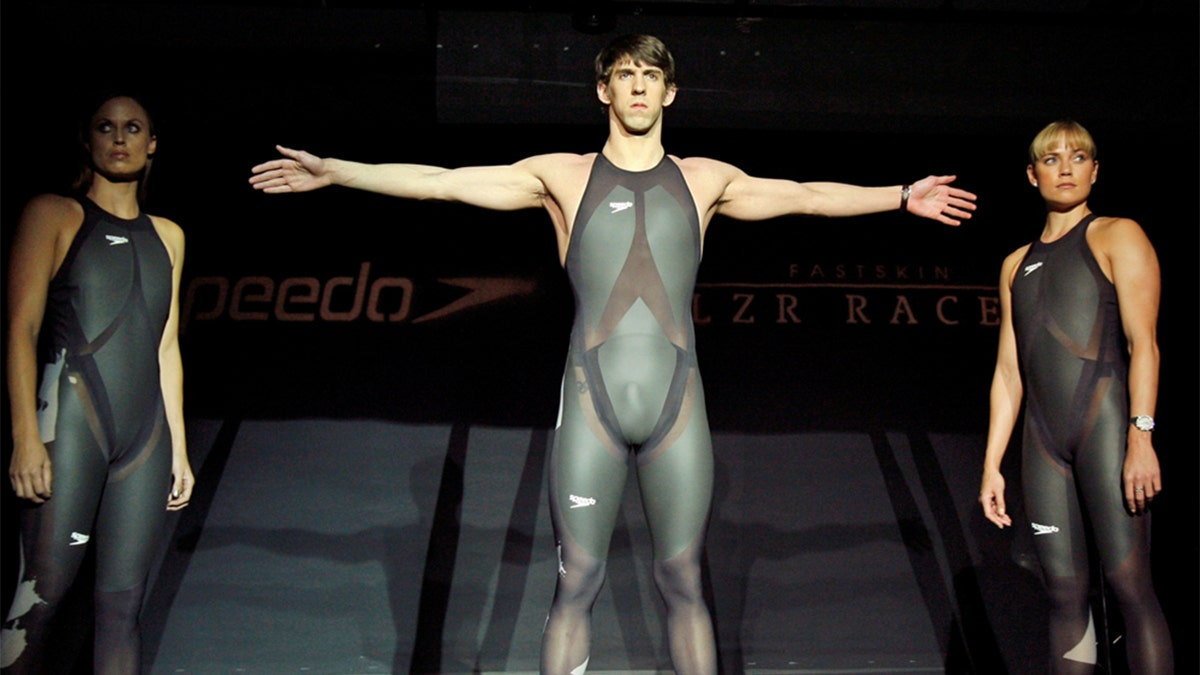How is NASA changing the game when it comes to sports?
‘Special Report’ anchor Bret Baier reports on how space has been a testing ground for sporting equipment and other NASA projects.
Some of the first experiments in space dealt with gravity and weightlessness. They were somewhat simple studies to test the new environment. Alan Shepard was the first man to hit a golf ball on the moon in 1971. He hit two balls, claiming the second traveled for "miles and miles and miles."
But that wasn’t actually the case. Because of limitations in his space suit, he was unable to tee the ball up or take a full swing. However, his moon shot has since inspired testing for golf clubs and other sporting equipment in space.
Cobra Puma Golf Company has developed a driver that was tested in space.
NASA ADMINISTRATOR SAYS 'AT LEAST A TRILLION' OTHER PLANETS LIKE EARTH COULD EXIST IN UNIVERSE
"They wanted to do a metal electric plating project in space," said Nanoracks co-founder Jeffrey Manber. "They were hopeful that what you would get are better golf clubs."
Nanoracks is now part of Voyager Space. The company has helped test equipment across a variety of sports. It has also conducted experiments on other household items. Some of these include looking at how whiskey ages in space with Ardbeg, testing shoe soles alongside Adidas, and potential future experiments with an ice cream manufacturer.
"It’s the beginning of using the unique environment of space for all sorts of everyday uses," Manber said.

Thirty-eight years ago, astronaut Bill Nelson, now the NASA administrator, used the first treadmill ever sent to space. (NASA/Getty Images)
For Cobra Puma’s experiment, they looked at how microgravity impacted certain metals in hopes of improving stronger, lighter alloys for use on Earth.
"NASA developed the screws that basically don't come loose when you shake them. They have put that in a weight at the bottom of a golf club driver," NASA Administrator Bill Nelson said. "Those screws don't come loose, and you can get that center of gravity of the golf driver even lower."
Nelson says anything developed for space has an application on Earth too. That includes the workout equipment on the International Space Station. Astronauts need to maintain muscle and bone strength while in space for long durations. They work out a minimum of six days per week for at least two hours each day. They must use specially designed equipment to move against microgravity.
MEDICAL BREAKTHROUGHS DISCOVERED ON INTERNATIONAL SPACE STATION
"We have learned so much since John Glenn first flew in orbit. There was a time before we put astronauts up. We did not even know if the eyeball was going to stay in the socket," Nelson said. "We put our astronauts through a rigorous exercising program in Zero-G. Because if you don't have the force of gravity causing those muscles to have to strain against gravity, and you're just floating around those muscles, those bones are going to atrophy."
The treadmills astronauts use keep them tied down so that they are able to maintain muscle strength. Their use on Earth has helped those rehabbing from injuries.
"We take that same pressure, flip it, and use it to lift people off the treadmill so we can take weight off of an injury as you're learning to walk or run again," said Daniel Lockney, NASA technology transfer program executive.

Nanoracks co-founder Jeffrey Manber said, "It’s the beginning of using the unique environment of space for all sorts of everyday uses." (AP Images)
Nelson used the first treadmill ever sent to space 38 years ago.
"I ran for 40 minutes on a treadmill, so I have run halfway around the world," Nelson said.
The footwear Nanoracks and Adidas tested helped create more wearable shoes.
JAMES WEBB TELESCOPE HELPS ENHANCE TECHNOLOGY FROM VIRTUAL REALITY TO LASIK EYE SURGERY
"They actually developed a new process using the microgravity environment. So what you got was, shoes that were more comfortable," Manber said.
Nanoracks also worked with Adidas to measure spin speed in a soccer ball.
"They wanted to understand the behavior in microgravity, to understand more about aerodynamic performance," Manber said.

NASA helped design a swimsuit for the Beijing Olympics. (AP Images)
NASA also helped design a swimsuit for the Beijing Olympics using wind tunnel testing.
"Every gold medal winner wore this suit. People were breaking their contracts to get into this thing," Lockney said.
Those wearing the LZR Racer had so much success, the international swimming federation ended up banning it.
CLICK HERE TO GET THE FOX NEWS APP
"Non-pharmaceutical doping, they called it," Lockney said. "It wasn't illegal at the time. But now you're not allowed to wear the NASA suit when you race in the Olympics because it's too fast."






















